Antiquities: Cryptonomicon Iron
 Kryptonomicon, without any discounts, is my favorite book. I read it a thousand times, both in the original and in translation. Exactly two years ago, I even wrote an essay , setting myself to explain why this is such a cool book. Despite the high level of accuracy of the events taking place in the book, this is still a fantastic work, but it is tied to a specific time period, which is interesting to me in itself without a book. Neil Stephenson does not give exact dates, but it is not difficult to determine the approximate time of the book’s validity. I will clarify that we are talking about the "modern" part of the plot, since there is also an "unmodern" one.
Kryptonomicon, without any discounts, is my favorite book. I read it a thousand times, both in the original and in translation. Exactly two years ago, I even wrote an essay , setting myself to explain why this is such a cool book. Despite the high level of accuracy of the events taking place in the book, this is still a fantastic work, but it is tied to a specific time period, which is interesting to me in itself without a book. Neil Stephenson does not give exact dates, but it is not difficult to determine the approximate time of the book’s validity. I will clarify that we are talking about the "modern" part of the plot, since there is also an "unmodern" one. On the one hand, the timeline of events occurring in the "Cryptonomicon" is backed by technical progress. On the other - the
Setting Environment Variables
In 1997, Intel launched the Pentium MMX and Pentium II processors. The latter are made in the form of a cartridge a la Dandy, and promise new heights of performance, but until the 98th they will be available only on desktop systems. Microsoft is working on Windows 98. The press of those years mentioned plans for an earlier release of the new OS (then Windows 97 would have turned out), but on June 30 the first beta is just coming out. Of the changes, for example, extended USB support (which, however, still needs to be finished with third-party drivers to complete operation, at least, mice and flash drives), support for the universal ACPI power management standard, thanks to which this image will eventually become a historical artifact:

And in Windows 98, Internet Explorer is built in, so much so that it seems impossible to remove it from there: even the desktop wallpaper is a web page. But we have 1997 in the courtyard, the current version of Windows is ninety-fifth, created at the time when Bill Gates considered the Internet to be insignificant. Since the summer of 1996, Windows NT 4.0 is available for professionals, but if it is used, then it is true for work: compatibility with games and other consumer software-hardware is wobbly. In 1997, the very first Grand Theft Auto game was released, the very first Half-Life, the CD-RW standard was finalized, although the floppy disk drive remains the data carrier. If anyone is interested, Microsoft releases the first version of Visual Studio. Well, Office 97, with a clip. The industry is still strong skeuomorph, although the public learns about this term only in 2013, when the new, seventh version of iOS, Apple will abandon the “talking” icon design. In 1997, almost all user software hides its discrete soullessness under the warm, lamp mask of real things and organisms - well, when a banal search in the operating system for some reason is presented in the form of a dog (but why ?!).
Rich was a year, that too. In the 90s every year was not poor for events in the computer industry. Especially in terms of iron. This is the era that is good: a huge variety of computer and near-computer devices. The standards have not yet settled down, one can still make it to the departing train of incredible profits. Computer magazines of those times are thick, stuffed with ads from manufacturers of computers, laptops, and software. They, in the conditions of the embryonic Internet, are a conductor of knowledge. The prices for hardware and software are high, so before buying, it is advisable to familiarize yourself with the profile press, to study the nuances of all the offers on the market, and there are thousands of them, these nuances! Now it is almost always possible to answer “yes any” to the question “which laptop to buy”. Then it was necessary either to know well a materiel, or to have very, very much money. Or both.
But it was true, and in the fairy tale "Kryptonomicon" its own atmosphere. The heroes of the book constantly dangle around the world, so laptops play an important role in the story (for those times). The main means of communication is the modem, dedicated lines - for non-poor corporations. The rudimentary wireless Internet is already mentioned, but for communication, not even mobile phones are used, but pagers. The author of the book is not trying to lower the fortress of his technotriller to the level of housewives: the text even contains Perl code. But to real devices and programs, it is not tied. Even Linux is renamed Finux in order to preserve the possibility of creative improvisation. But even more interesting. At this point, I finish the introduction and begin to sew with
Soundtrack
I don’t know about you, but my 1997 is also the year of my favorite music. Then a lot of interesting things were released, but for the right atmosphere I collected a collection of electronic music from 21 years ago. More collections - in my telegram channel about music .

One of the laptops is connected to a portable printer. Avi loads several sheets of paper into it. The second displays several lines on the screen, beeps and freezes. Randy walks over and looks at the screen with interest. On it is an invitation:
FILO
Randy knows that this is the abbreviated name of the bootloader, a program that allows you to select an operating system.
“Finux,” Avi grumbles in response to Randy’s unasked question.
“How many operating systems do you have here?”
“Windows 95 for toys and in case you need to borrow a computer to some kind of teapot,” Avi says. - Windows NT - for any office nonsense. BeOS - for programming and media pieces. Finux - for printing on an industrial scale.
- What is now?
- BeOS. I want to show some pictures. I guess there is a projector?
It seems here is the place for nostalgic pictures. Windows 95:
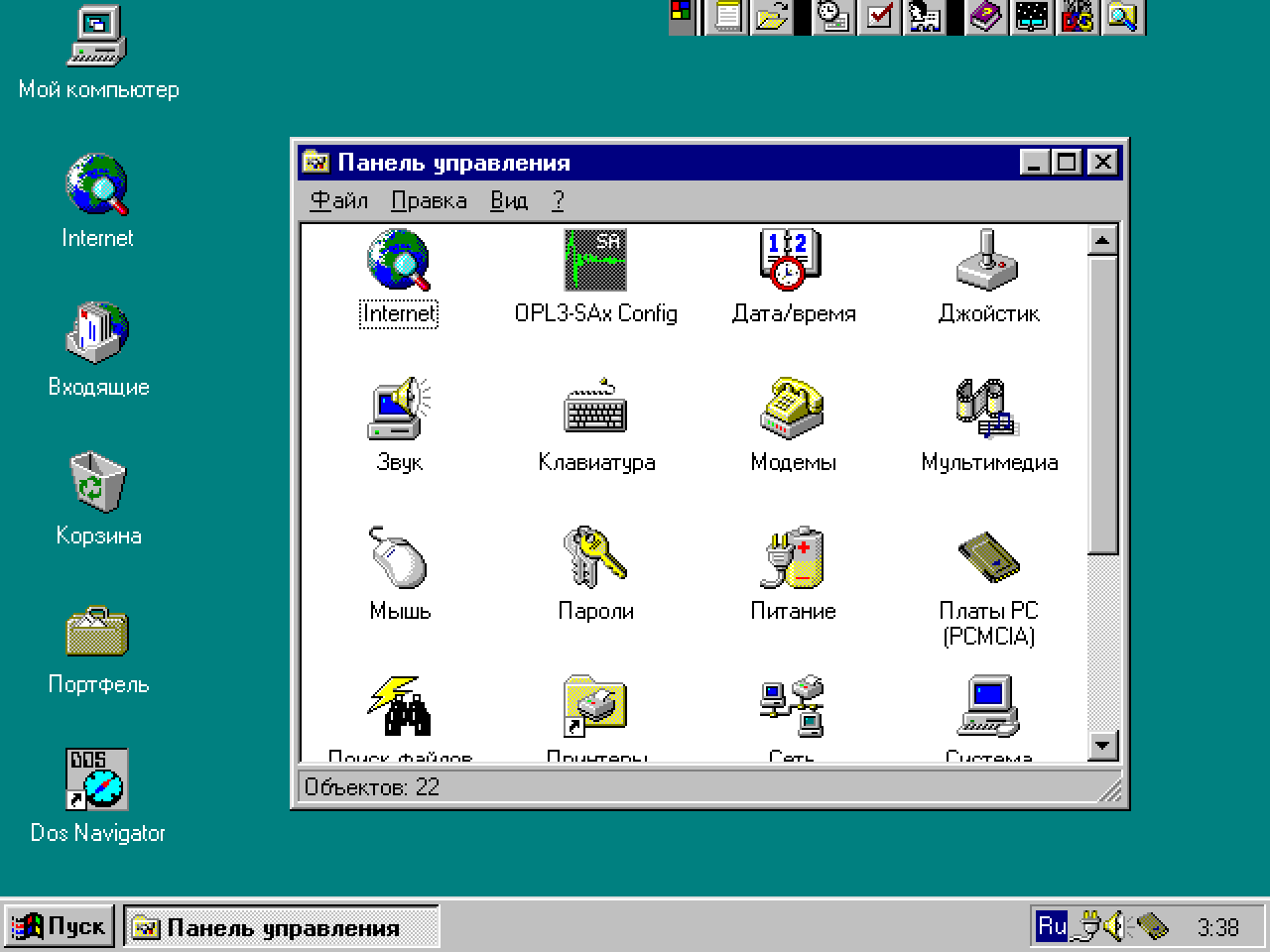
Windows NT 4.0 from the advertisements in the magazine PC Magazine, September 1996. There's also a program article about the benefits of "Windows NT with a Windows 95 interface." For the first time, a Microsoft IIS web / ftp server is built into Windows.
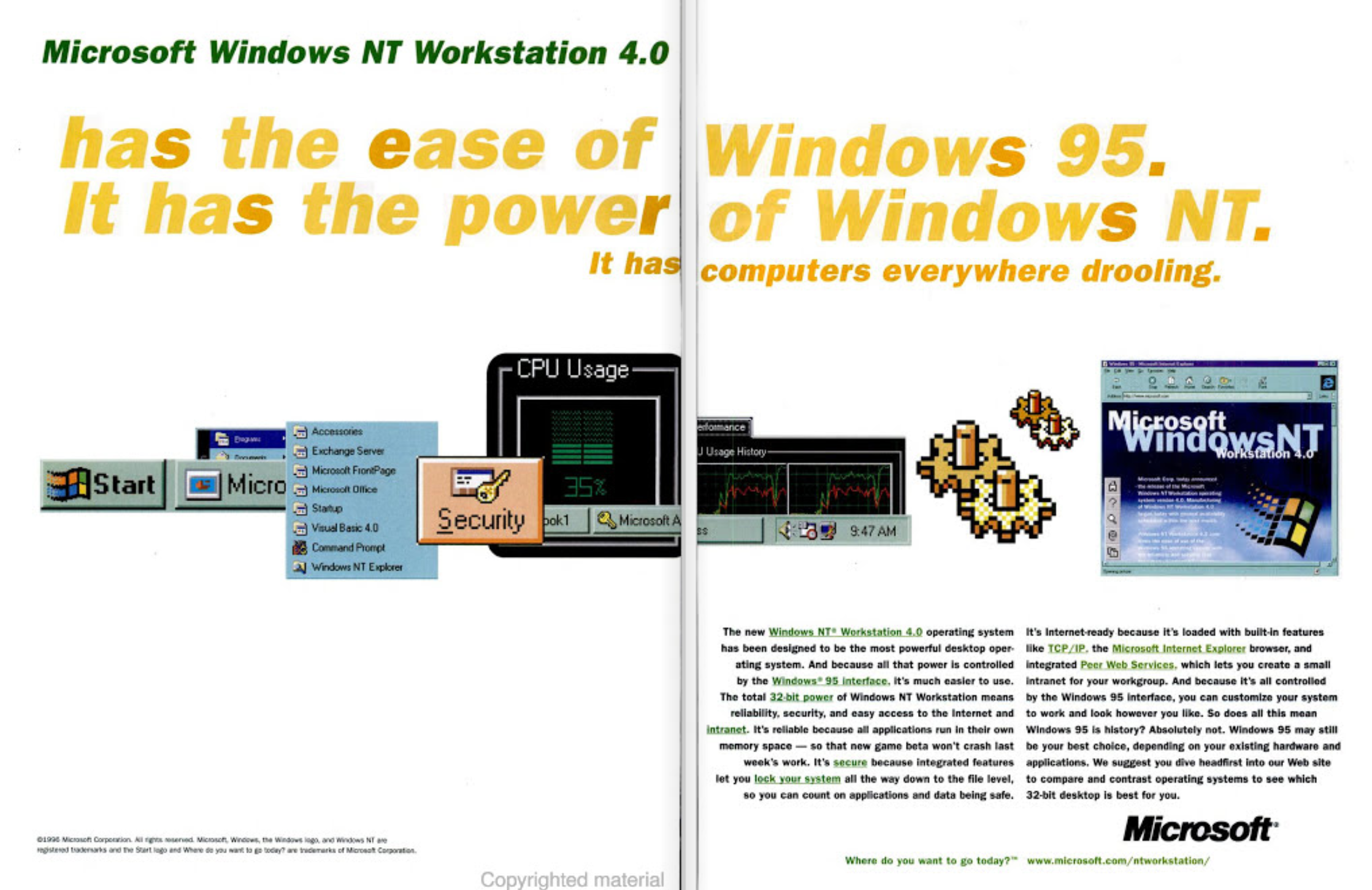
I have yet to study BeOS, but in the context of 1997 and the plot of the Kryptonomicon there is one interesting point. Initially, BeOS was developed for the PowerPC architecture, and in 1997 it was set up as an alternative to Mac OS on clones of Apple computers. In the same year, Apple bought NextStep together with Steve Jobs, the practice of producing legal clones of macs was discontinued, and the creators of BeOS had to port the system to the x86 platform. What happened with the release of version r3, but in the summer of 1998. Obviously, Avi in this story, in principle, could not combine two operating systems in one computer, written for different hardware platforms. Suppose that the pictures he showed in the early beta. Screenshot from here :
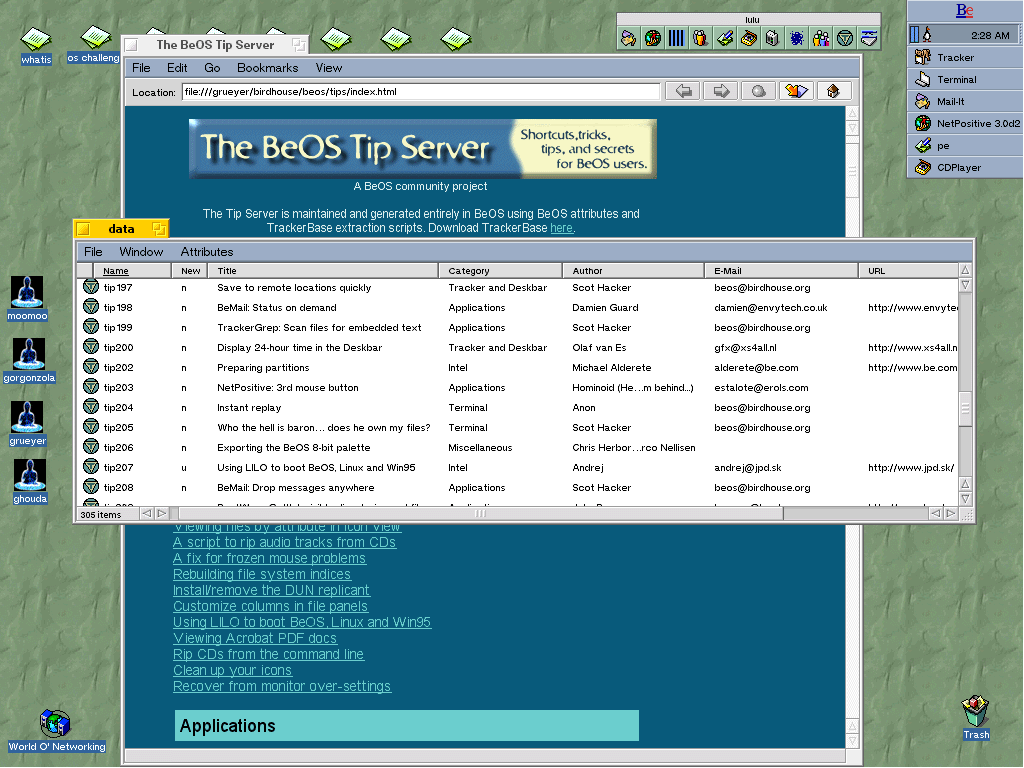
Nice to see stability. As someone wrote down a homepage in the 90s, so it works. Linux in 1997 looked something like this (screen from here ):

In 1997, Debian 1.3 was released. The CD is already bootable, but not Live, just a floppy image with an installer. On a 1998 laptop, the installer displays a greeting and instantly reboots. The current version of the kernel 2.0, the main new feature - support for parallel computing. For those who can afford a very expensive system with a pair of Pentium Pro.
Now he automatically draws on the screen of a small computer, one on which you can draw with a light pen. Typically, serious programmers do not use these, but Eb (or rather, his cawed company) wrote software for this model, so he has a whole bunch of them.
I do not pretend to the accuracy of determining the real iron. But it could well be, for example, an early ThinkPad 700T or 710T tablet running PenPoint OS. The latter was developed by Go Corporation , and in 1991-1992, this platform seemed to everyone to be super-breakthrough (as noted independently by each other by Byte and PC Magazine). In 1994, the company bought AT & T and almost immediately turned all new research. Other companies developed software for this system, such as SmartSketch, which later evolved into Macromedia and Adobe Flash, now Adobe Animate. The pen in such devices was, of course, no longer a light one, but this was not the mistake of Neal Stevenson, but the translator (in the original, just a stylus).
Avi disconnects the screen from the large laptop and puts it on the projector, so that the light, passing through the liquid crystal screen, projects the image on the board. This is the usual desktop: a couple of windows and a few shortcuts.
There was a time when portable computers already existed, there were presentations, but there were no projectors, or rather, they existed, but belonged to an ancient era, when they printed printed on a transparent film to the big screen. The LCD screen is by definition transparent, and if you separate the LCD matrix itself from the backlight unit, you can easily use a laptop with an old projector.
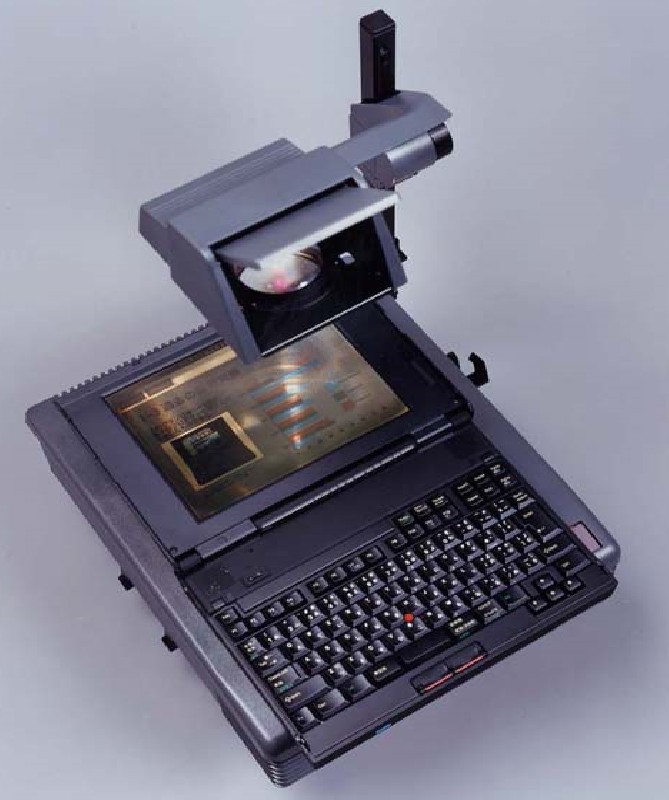
An example of such a laptop is the ThinkPad 755CDV. Inside, there was either a 486 processor per 100 MHz or a Pentium 75. In 1995, it cost $ 7549. In modern dollars it is 12.5 thousand. Now it is a great rarity.
Therefore, cut the laptop, connects it to a telephone jack, opens the remote access program and dials the Californian number. Calling from the go - the hotel is modern, and in Kinakute modern telephone service.

In October 1997, PC Magazine conducts a comparative test of high-speed (up to 56 kilobits per second) modems. Standards X2 and K56Flex compete with each other. In 1998, standardized protocol V.90 (later V.92), poorly compatible with both applicants. Until the very last modem days, I didn’t see the cherished line of the Conect 56000. At best, 48k.
The award “Editor’s Choice” is received by 3Com Sportster, which was almost as good as the more expensive Courier. The winner cost 200 dollars in domestic execution and 220 for the external device. I wonder how much the international modem connection cost then.
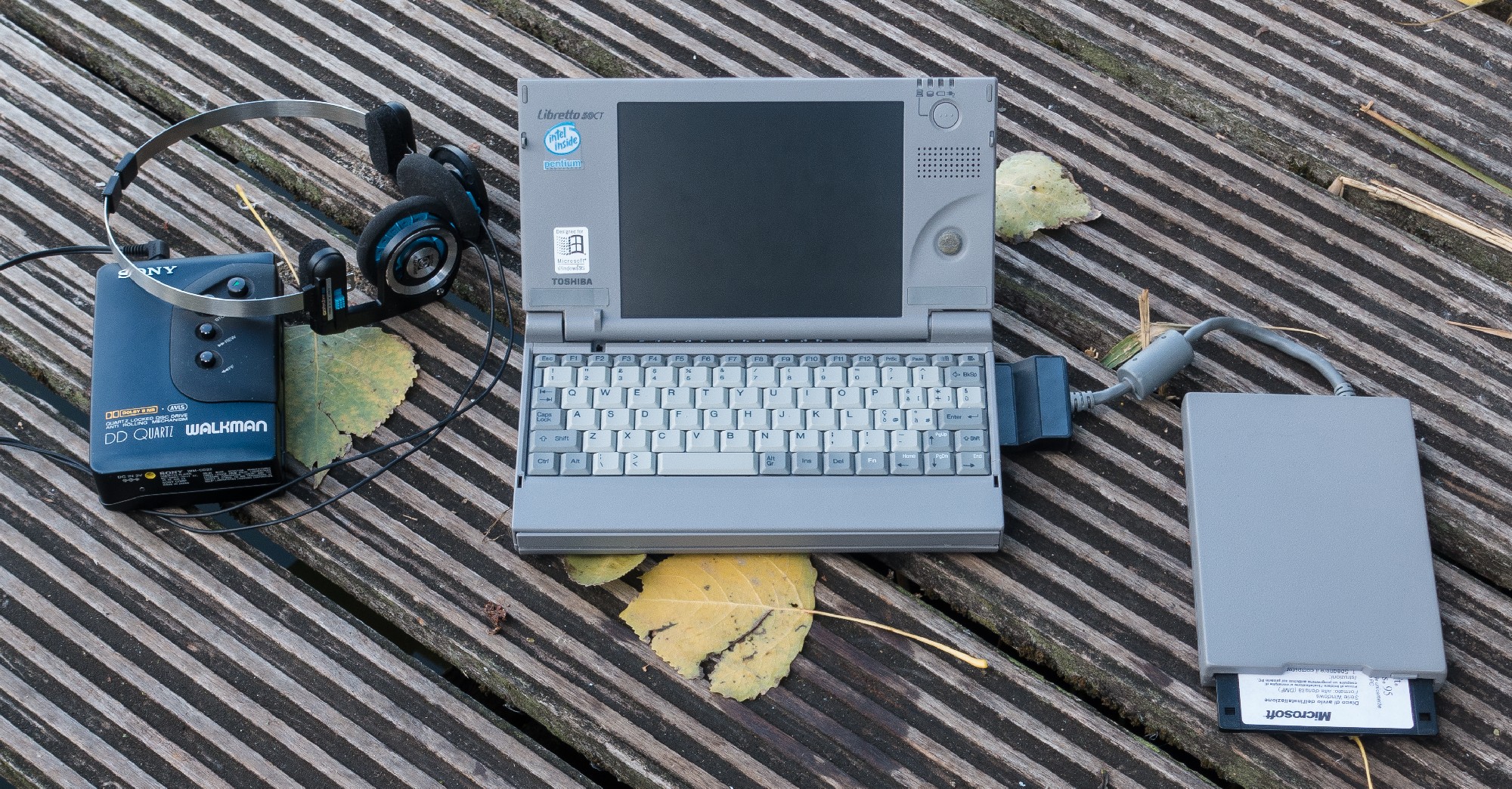
On the photo is a mini-dream set of 1997 sample from the devices I have. It turned out that most of the glands are newer in me - in 1998 and later. Of course, the Cryptonomicon must be cosplayed with a CD player: in the west in the late 90s very few people listened to tapes. The Toshiba Libretto 50ct laptop was released in 1997 and seems to be ideally suited for the role of an IT-man's “combat vehicle” with business trips of nine months a year. But ... not really. I managed to get acquainted with this device closer and now I know that it is trite uncomfortable. To the detriment of mobility, I would then use the device heavier, but more comfortable.
Programming is too loud. Every epiphyte in the laptop has a tiny video camera for remote conferences. Avi insisted on it. The camera is almost invisible: it just doesn’t have a hole two millimeters in diameter above the display. This is a camera in the most ancient sense of the word camera obscura. In one wall - a hole in the other - silicon retina.
I may be wrong, but I know the range of laptops of the end of the 90s quite well, and I did not come across the description from the book. Only at the beginning of the two thousandth, the fashion for webcams was born, and then in my laptops this is an option for which a special slot was made in the display lid. Built-in webcams in laptops in 1997, I have not seen. It is doubtful and description of the webcam. I doubt that then, in principle, it was possible to make it miniature and inconspicuous. The only thing from that era that I found, and that has a connection with a laptop, looks like this ( from here ):

Very discreetly. Intel ProShare was designed for large companies, but not for end users.
So Pekka got a nineteen-inch, high-resolution MultiSync monitor, just under his young eyes (he was then twenty-four). He connected the monitor to an almost new Pentium full of RAM.
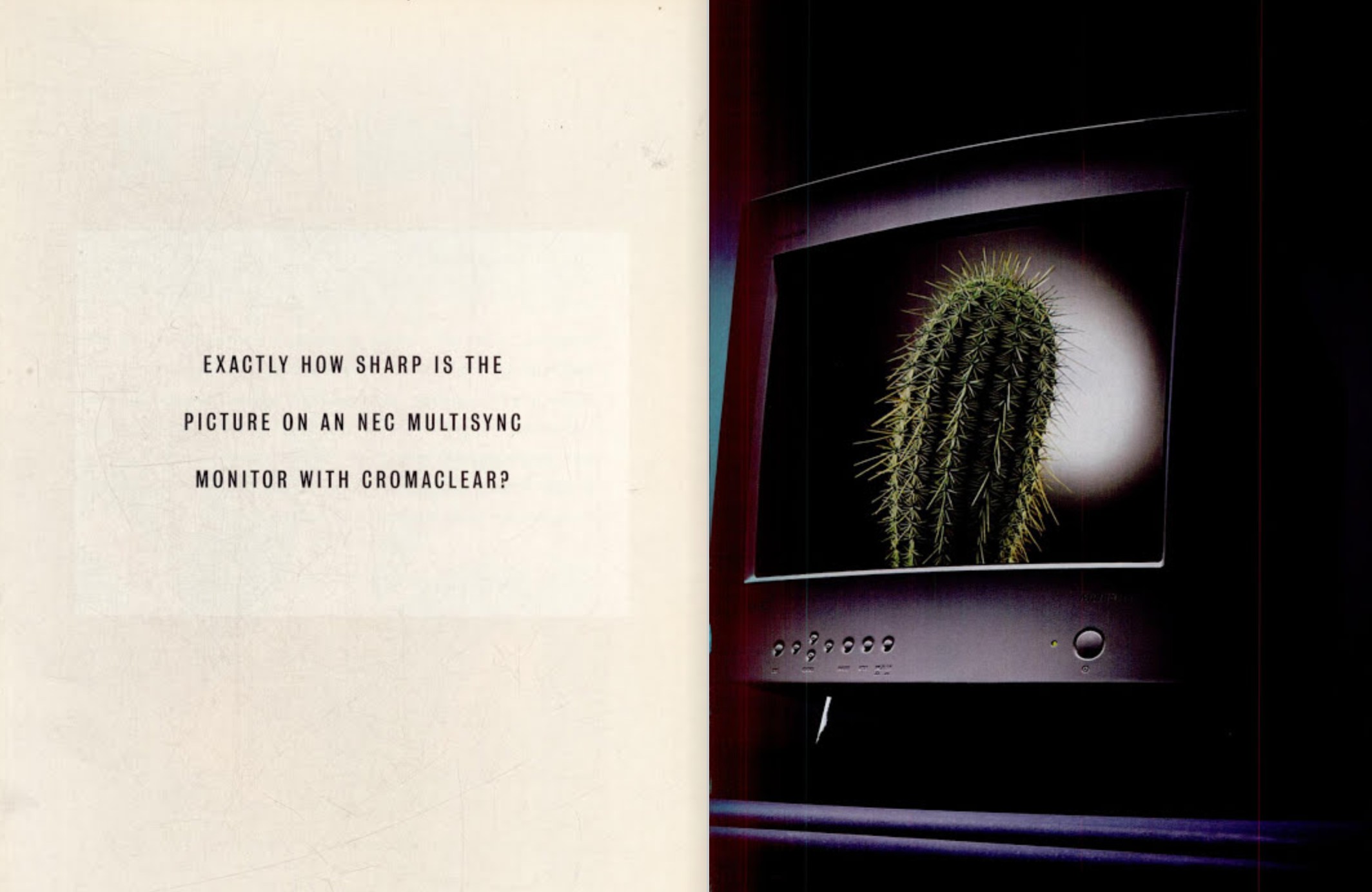
“Memory full” is 96-128 megabytes in servers for small and medium businesses.
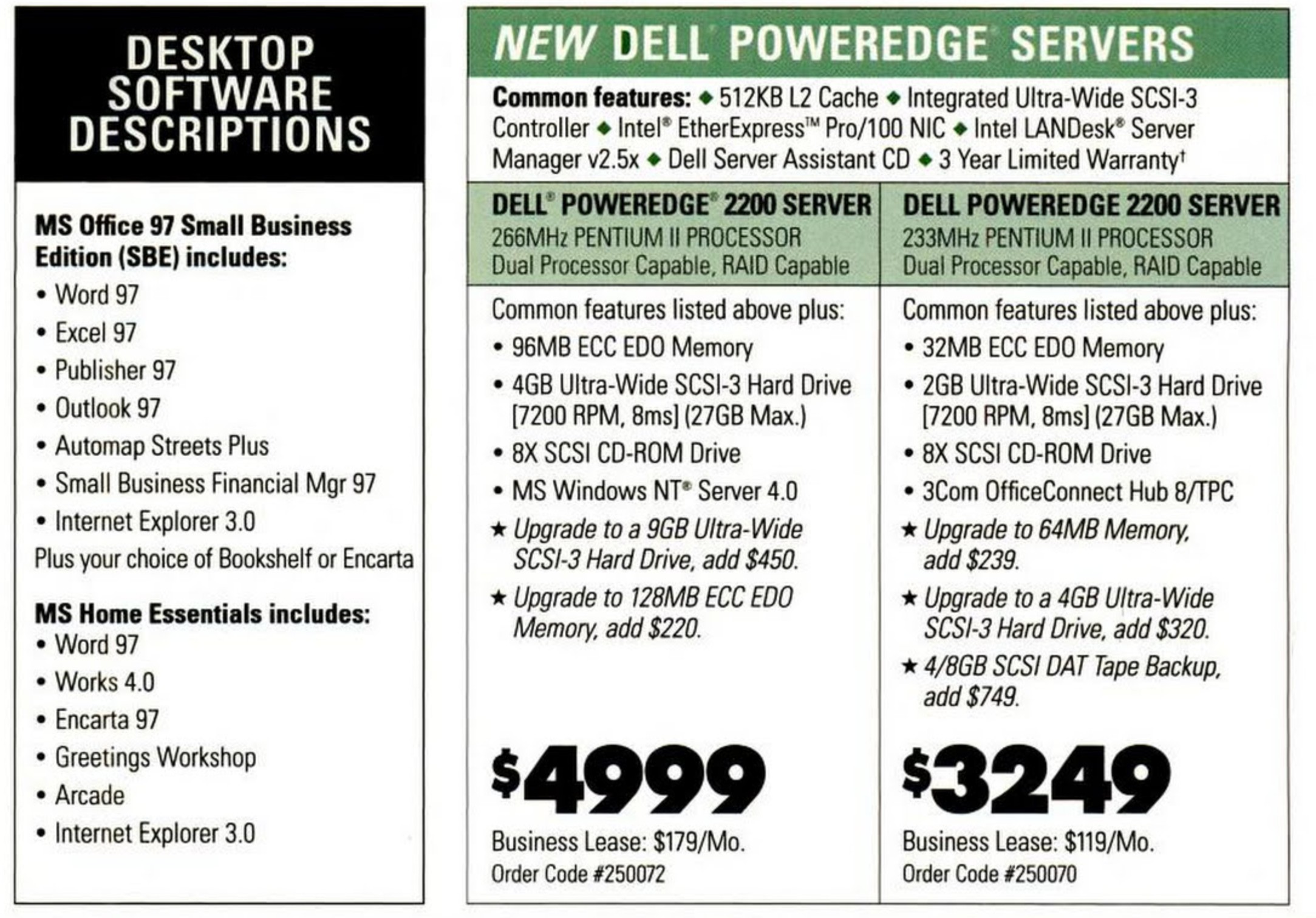
16-32 in laptops, 32-64 in user desktops. PC Magazine in its review of the best PCs in the summer of 1997 recommends 32 megabytes of memory for Windows 95 and twice as much for Windows NT.
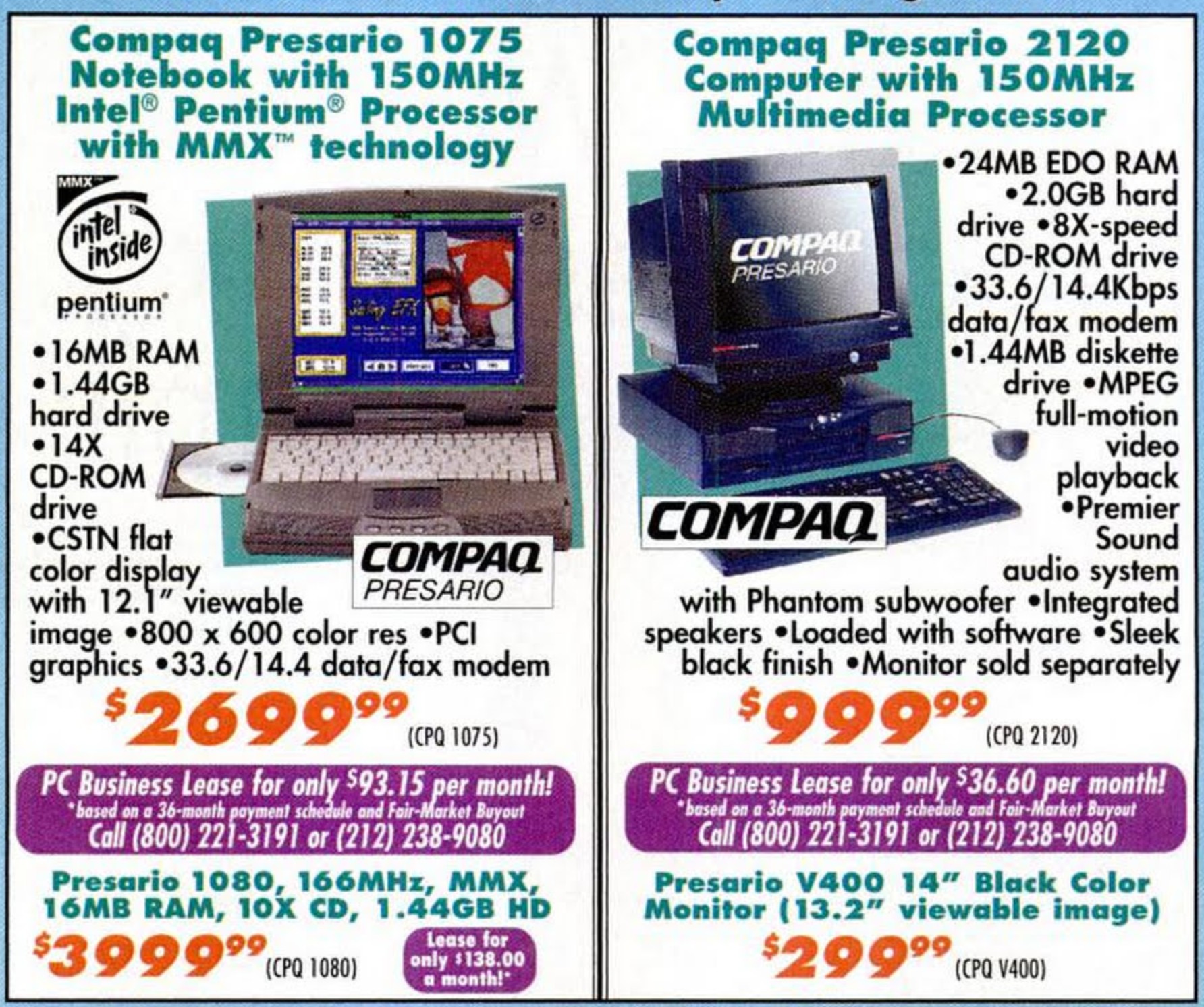
He sits down on Cantrell's bed (there is nowhere else to sit) and discovers a handheld on the table — plugged in, loaded, and connected to the world with a telephone cable. Randy heard about such toys. It is believed that this is the first network computers, so when you turn on the network browser immediately loads. Network browser - the interface of this machine.
Perhaps this is a reference to the British company STNC, which generally dealt with mobile web technologies. Its development was somehow used in various devices, for example, in the Psion Series 5. But in 1997, the company demonstrated a kind of “world's smallest browser”, which was precisely that hardware device, and there was nothing else in it except the browser. In 1999, the company STNC bought Microsoft, and all their technologies later turned into a mobile version of Microsoft Internet Explorer. Of the more traditional handhelds in 1997, Apple Newton and the very first Palm PDA were available.

The clock with a calculator from Randy on his hand swoops twice. He checks the time: three o'clock in the afternoon.
- Randy? - Ami asks velvet voice.
- Yes?
“Could you get me the square root of three thousand eight hundred twenty three on this thing?”
- Why do you need?
- It is necessary.
Randy raises his wrist to see the display of the watch, takes a pencil out of his pocket and starts to press buttons with an eraser. He hears a metallic chime, but pays no attention.

Chester is shocked that someone else is booking tickets by voice; Recovering from his amazement, he leads Ami to the nearest computer (in each room stands by car with all his belongings), enters straight into the airline database and begins to search for the best route for the flight.

If online booking systems were then available, it seems only for “our own”. End users were asked to book tickets by phone or in person at sales offices. At best, airline websites reported phone numbers and agency addresses.
He brought "presents": some hamburgers, cheap reading matter, a gigantic bottle of petobeal from an upset stomach, a CD player and a thick stack of discs.

Introductory sections stripped from the leadership of the Second World War. They were declassified only ten years ago; then one of John Cantrell's friends came across a copy in the Kentucky library, arrived with a bag of dimes and all otkseril. As soon as the materials got into open access, civilian cryptography jumped to the level that the government reached in the forties.
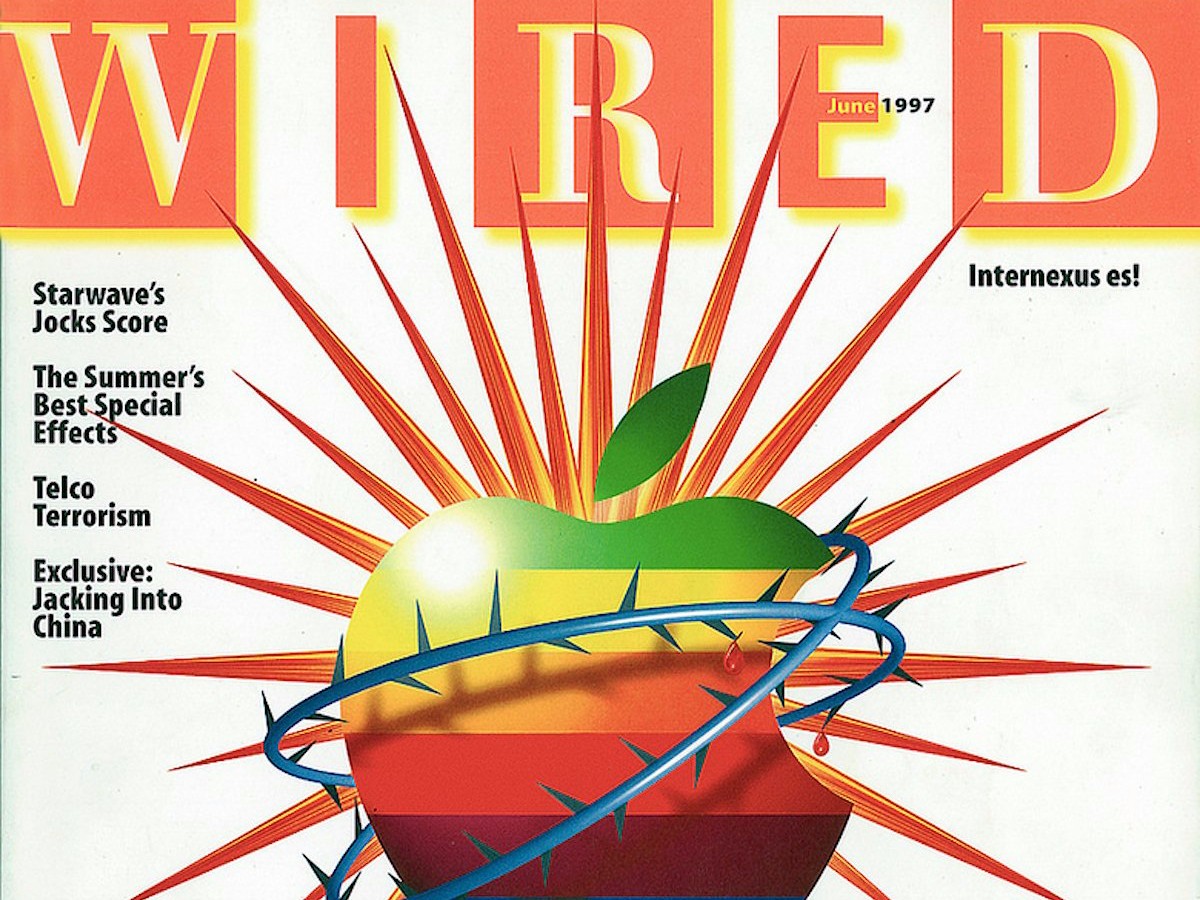
Here on this quotation I probably will finish. In “Kryptonomicon”, Turing magazine is mentioned as a sectoral media of fashionable IT start-upers, the real prototype of which seems to be Wired magazine. Already in the process of preparing the material, I came across an article from 1993 , which helps to connect the Kryptonomicon plot with reality. It tells about the pressure on Phil Zimmerman’s Pretty Good Privacy encryption system author , about the forced conflict of the computer industry with government agencies: in the United States at some point it turned out that ordinary user PCs are subject to strong cryptography export. So, the plot of the quotation above - it is (almost) not fictional.
In reality, one of the early employees of Sun Microsystems, John Gilmore, was fighting with the US National Security Agency for declassifying materials written by William Friedman in the fifties. The documents were declassified, then for some unknown reason they were classified again, and while Gilmore’s lawyers were butting for them, his friend found some of the texts, naturally, in the public library of Virginia. By the way, Friedman in 1941 got into the hospital with a nervous breakdown, as they say, earned in trying to decipher the Japanese military codes. And this is another reference from the plot of the book to reality.
An article in the magazine Wired at first evokes a feeling of deja vu: techies are in favor of privacy, the state does not particularly encourage this business, everyone is excited. On the other hand, the context of the early nineties is also given there, when not only the Internet was open to everyone. At the same time, mobile communication could be monitored using a radio receiver, while paging services broadcast messages in clear text over a common channel. In a quarter of a century, the situation has definitely improved. Of course, in 1993, few could have imagined that users of network services would voluntarily convey an incredible amount of information about themselves in exchange for basic services such as the ability to “communicate via the Internet with friends” or “work with e-mail”.
To be honest, my background makes me perceive not only Cryptonomicon, but also the digital reality of 1997 as a good fairy tale. 21 years ago I had neither the second Pentium, nor the first. I had a 386th PC at 40 megahertz and 8 megabytes, Windows 95 slowly rotated, loaded from a 250 megabyte hard drive. The image was displayed on a 14-inch monitor, and when it burned down, the computer was bolted to the Soviet TV "Horizon". Instead, the Internet was Fido, and laptops even had no dream. I can not say that it was bad, rather the opposite. But my real IT story is completely different, and I will tell it sometime later.
